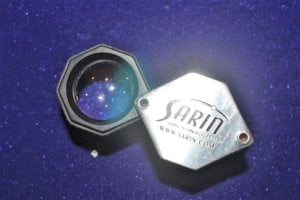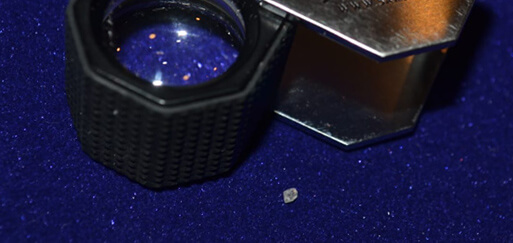Large diamonds make headlines. Large diamonds stand out – for their rarity, sparkle and value. For many reasons, big diamonds capture much of the attention and imagination of the market.
Small diamonds may be more common, and more accessible to the average buyer. But if you look at the way a small diamond is planned and produced, you’ll discover an incredible story of technological accuracy and ingenuity.
How Small is a Small Diamond
Diamonds in the smaller segment can be truly tiny to the naked eye. A 1-carat diamond is made up of 100 points. So, a 5-point diamond is just 1/20th of a carat. Measured across its widest point, a 5-point diamond is a tiny 2.25 millimeters.
To give you a sense of proportion, look at the image below. The rough diamond seen just beneath the loupe is a mere 4.7 points. Without the help of a magnifier, this diamond is truly miniature, the details almost imperceptible. It is difficult to imagine how such a small diamond – the size of a grain of rice, or even smaller – can be planned and polished to the level of accuracy needed to create a marketable, profitable product.


Due to the fact of their size and rarity, larger diamonds are more valuable than smaller diamonds. For manufacturers, it is worthwhile investing more in the technology and processes required to produce larger polished diamonds. When it comes to smaller diamonds, however, manufacturers must find ways to reduce the cost of their production while still ensuring a good level of quality to maximize the diamond’s value and potential profit margin.
How Small Diamonds Are Produced
In recent years, Sarine Galaxy® inclusion mapping technology – the world’s most popular technology for inclusion mapping of larger rough diamonds – was adapted for the smaller diamond segment in two devices: Galaxy Meteor® for rough diamonds between 0.25 and 0.89 carats, and Galaxy Meteorite® for rough diamonds up to 0.4 carats.
Check out the video below – it shows a rough diamond sized at 4.7 points (less than 2.5 millimeters wide!), after scanning and mapping for inclusions with the Galaxy Meteor technology. You can also see how Sarine Advisor® rough planning software created a cutting plan for the production of two very high quality polished diamonds from this 4.7 point rough – both featuring IF (internally flawless) clarity. In this minutely detailed polishing plan, the technology is truly the star of the show:
Getting Maximum Value from Miniature Diamonds
In the past, smaller diamonds were mapped for inclusions manually, and the results were much slower and far less accurate that those achieved by the Galaxy Meteor technology. The Meteor device scans and maps small diamonds at a more rapid pace, thereby making the technology more cost effective for manufacturers involved in the mass production of smaller, cheaper diamonds.
For these same manufacturers, the Galaxy Meteor reveals a level of detail in the rough diamond that could not be seen before. Yet inclusion planning is just the first step in maximizing the polished value of tiny rough diamonds. Sarine Advisor 7.6 automatically plans rough diamonds after Galaxy Meteor inclusion scanning and provides dozen of possible cutting plans – without the need for human intervention, reducing planning time and increasing productivity. In the smaller diamonds segment, where profit margins are tighter, efficiency in rough planning is critical.
For small rough diamonds, even tiny improvements in the cutting plan can make a huge difference. For example, the ability to extract a 2-pointer polished diamond instead of a 1 pointer – although only millimeters of diamond are involved – leads to a significant increase in the profit yielded from the rough diamond.




-1.jpg?width=310&name=blog_image%20(003)-1.jpg)





